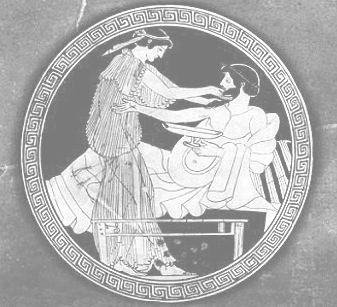 | ||
Philaenis of Samos (in Greek, Φιλαινίς) was apparently a Greek courtesan of the fourth or third century BC. She was commonly said to have been the author of a manual on courtship and sex. The poet Aeschrion of Samos denied that his compatriot Philaenis was really the author of this notorious work, insisting that it was instead written by Polycrates, an Athenian sophist.
Surviving Fragments
Three individual fragments of Philaenis's manual have been rediscovered among the Oxyrhynchus Papyri (P.Oxy. 2891), but the fragments are exceedingly brief and the handwriting on them is barely legible in some places; in the second of the three fragments, only five letters can be securely identified. A complete English translation of the surviving portion of the book is as follows:
"Philaenis the Samian, daughter of Ocymenes, composed this book for those who wish to live their life with knowledge gained scientifically, not unprofessionally. She toiled...
On Seductions: Now, the seducer must come to the woman untidy and uncombed, so that he does not seem to the woman to be a man who takes much trouble...
[On Flattery]: ...with the intention..., while he says that she... is equal to a goddess, that she who is ugly is as lovely as Aphrodite and that she who is older is as Rhea.
On KissingBeginning with techniques of seduction, the book is believed to have treated the sexual arts systematically, including descriptions of sexual positions, aphrodisiacs, abortifacients, and cosmetics. The rediscovery demonstrates that a real tradition of technical manuals underlay the more playful Art of Love written in Latin verse by Ovid in the late first century BC.
